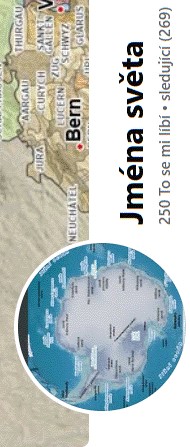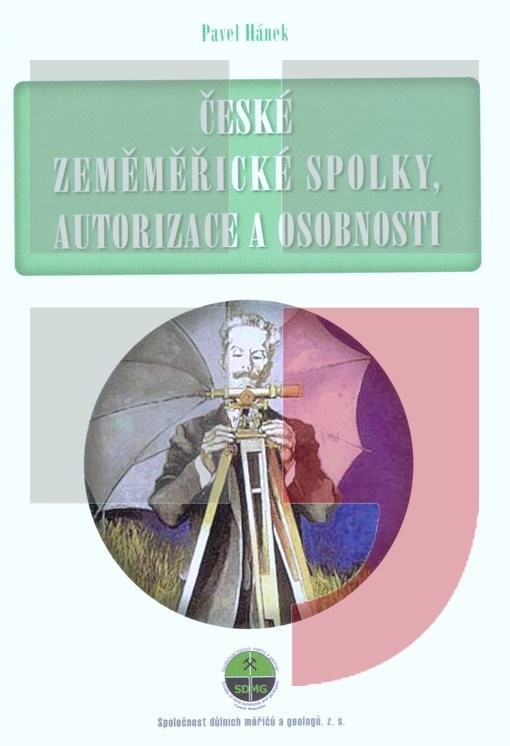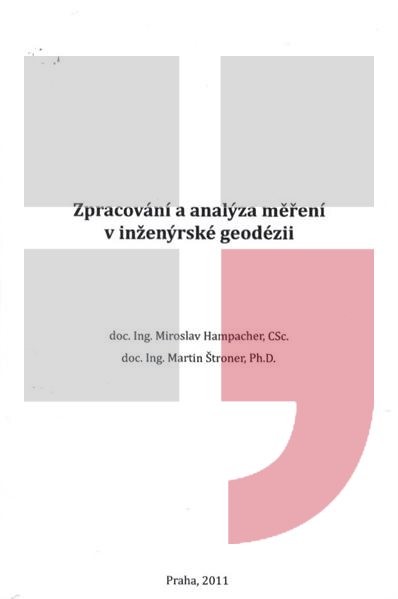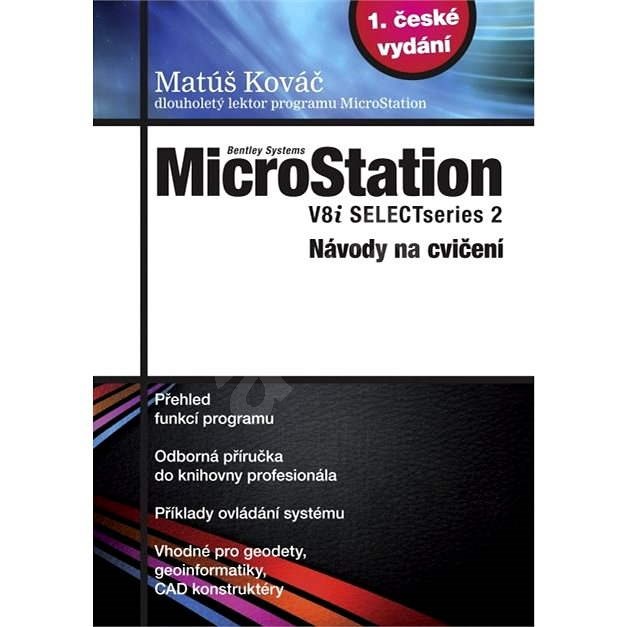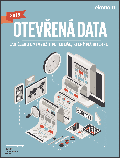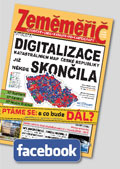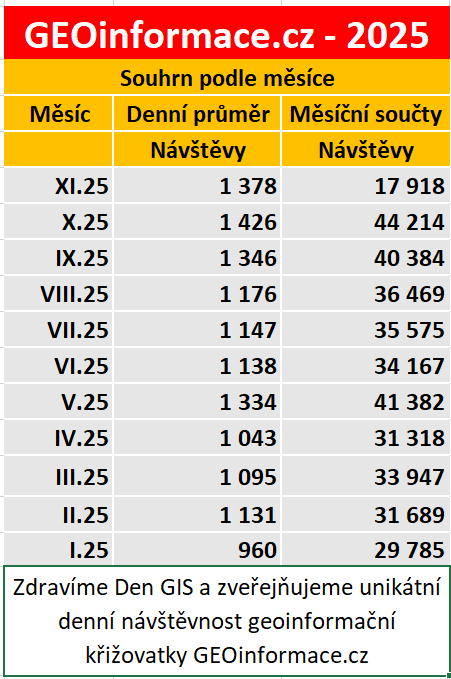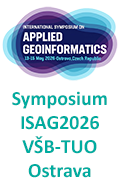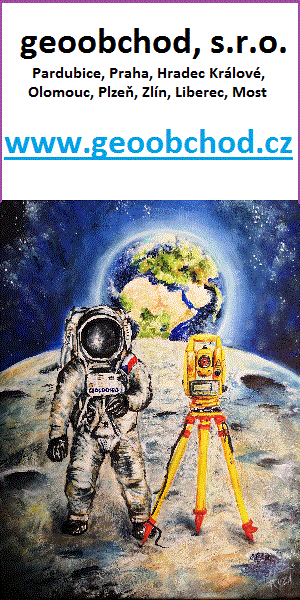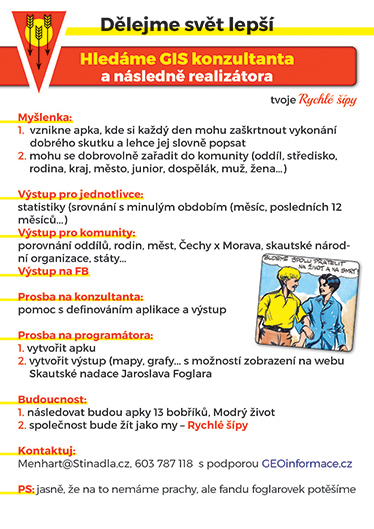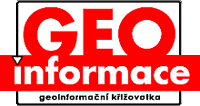zprávy
zdroje zpráv:rada/odborný rada - inspektor Zeměměřického a katastrálního inspektorátu v Pardubicích
29.11.2021 10:51 ČÚZK - předpisy a opatření Zeměměřický a katastrální inspektorát v Pardubicíchvypisuje výběrové řízení na místo
rada/odborný rada - inspektor Zeměměřického a katastrálního inspektorátu v Pardubicích
rada/odborný rada - inspektor Zeměměřického a katastrálního inspektorátu v Pardubicích
29.11.2021 10:51 ČÚZK /Urady/Zememericke-a-katastralni-inspektoraty/Zememericke-a-katastralni-inspektoraty/Zememericky-a-katastralni-inspektorat-v-Pardubicic/Uredni-deska/Oznameni-a-jina-uredni-sdeleni/Volna-mista/DMS/rada-odborny-rada-inspektor-Zememerickeho-a-katarada/odborný rada - inspektor Zeměměřického a katastrálního inspektorátu v Pardubicích
29.11.2021 10:51 ČÚZK - volná místa Zeměměřický a katastrální inspektorát v Pardubicích vypisuje výběrové řízení na místo rada/odborný rada - inspektor Zeměměřického a katastrálního inspektorátu v PardubicíchGalileo satellites given green light for launch
29.11.2021 10:16 ESA Navigation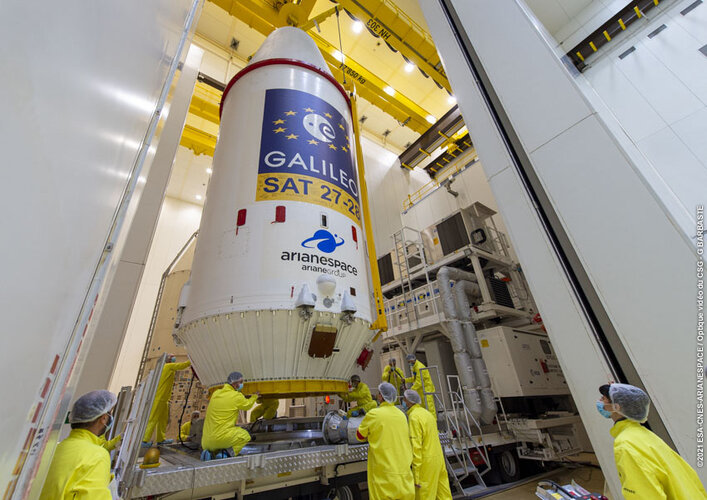
Europe’s next pair of Galileo satellites have been given a green light for launch. Last Friday’s Launch Readiness Review confirmed that the satellites, the supporting ground installations, and the early operations facilities and teams are ready for lift-off on the early hours of Thursday morning, European time.
Galileo satellites given green light for launch
29.11.2021 10:16 ESA Navigation
UPDATE: GALILEO LAUNCH NOW SCHEDULED FOR 3 DECEMBER AT 0127 CET (2 DECEMBER 2127 KOUROU TIME)
Europe’s next pair of Galileo satellites have been given a green light for launch. Last Friday’s Launch Readiness Review confirmed that the satellites, the supporting ground installations, and the early operations facilities and teams are ready for lift-off on the early hours of Thursday morning, European time.
Galileo satellites given green light for launch
29.11.2021 10:16 ESA Navigation
UPDATE: GALILEO LAUNCH NOW SCHEDULED FOR 3 DECEMBER AT 01:27 CET (2 DECEMBER 21:27 KOUROU TIME)
Europe’s next pair of Galileo satellites have been given a green light for launch. Last Friday’s Launch Readiness Review confirmed that the satellites, the supporting ground installations, and the early operations facilities and teams are ready for lift-off on the early hours of Thursday morning, European time.
Úspěch uživatelů ArcGIS v soutěži Egovernment The Best 2021
29.11.2021 9:52 ARCDATAMagazín Egovernment každoročně pořádá soutěž Egovernment The Best, ve které jsou oceňovány nejzajímavější projekty veřejné správy. Letos se na předních místech v kategorii krajů umístily hned dva projekty založené na technologiích Esri.
1. místo v kategorii krajů: Datový portál Královéhradeckého kraje a Katalog otevřených dat Královéhradeckého kraje
Cílem datového portálu Data KHK na adrese https://www.datakhk.cz bylo vytvořit centrální informační místo pro veřejnost a zároveň nabídnout veřejnosti otevřená data kraje na vysoce profesionální úrovni.
V současné době je v datovém katalogu 55 sad otevřených dat a přes 300 statistických ukazatelů v grafech. Zároveň je tento web rozcestníkem pro 16 webových portálů a 29 mapových aplikací kraje (většina z nich byla vytvořena pomocí produktů využívajících technologii ArcGIS), umístěno je zde 35 analýz, koncepcí a publikací z Královéhradeckého kraje. Je také rozcestníkem pro strategické a koncepční dokumenty kraje a je zde umístěno 30 datových karet ke zprávě o stavu kraje za rok 2020.
Datový portál Královéhradeckého kraje Data KHK je založen na technologii ArcGIS Hub a byl vytvořen pracovníky Odboru analýz a podpory řízení krajského úřadu a Centra investic, rozvoje a inovací, příspěvkové organizace kraje.
2. místo v kategorii krajů: Portál územního plánování Kraje Vysočina
Portál územního plánování Kraje Vysočina byl spuštěn na jaře tohoto roku a vy jste se s ním mohli seznámit již v přednášce na naší konferenci či v článku Kraj Vysočina spustil Portál územního plánování v časopisu ArcRevue. Cílem tvůrců bylo sjednotit dostupná data územně plánovacích podkladů a územně plánovacích dokumentací, ať již jde o územní plány jednotlivých obcí, zásady územního rozvoje, regulační plány, územní studie a územně analytické podklady. Dále také na jednom místě zpřístupnit data všem potenciálním uživatelům a zprostředkovat informace srozumitelným a uživatelsky přívětivým způsobem formou mapového atlasu.
Portál územního plánování Kraje Vysočina naleznete na adrese https://pupo.kr-vysocina.cz/
Autorům oceněných projektů srdečně gratulujeme a velmi nás těší, že pomocí technologie Esri vytvářejí takto úspěšné a užitečné projekty.
20211129 - volné místo - Ředitel/ředitelka KP Ústí n.L. na Katastrálním úřadu pro Ústecký kraj
29.11.2021 7:42 ČÚZK - předpisy a opatření Katastrální úřad pro Ústecký kraj - Katastrální pracoviště Ústí nad Labem zveřejnil novou aktualitu: Nabídka volného místa - služební místo představeného – Ředitel / ředitelka Katastrálního pracoviště Ústí nad Labem na Katastrálním úřadu pro Ústecký kraj20211129 - volné místo - Ředitel/ředitelka KP Ústí n.L. na Katastrálním úřadu pro Ústecký kraj
29.11.2021 7:42 ČÚZK /Urady/Katastralni-urady/Katastralni-urady/Katastralni-urad-pro-Ustecky-kraj/Katastralni-pracoviste/KP-Usti-nad-Labem/O-uradu/Aktuality/20211129-volne-misto-Reditel-reditelka-KP Usti20211129 - volné místo - Ředitel/ředitelka KP Ústí n.L. na Katastrálním úřadu pro Ústecký kraj
29.11.2021 7:42 ČÚZK /Urady/Katastralni-urady/Katastralni-urady/Katastralni-urad-pro-Ustecky-kraj/O-uradu/Aktuality/20211129-volne-misto-Reditel-reditelka-KP Usti20211129 - volné místo - Ředitel/ředitelka KP Ústí n.L. na Katastrálním úřadu pro Ústecký kraj
29.11.2021 7:42 ČÚZK - předpisy a opatření Katastrální úřad pro Ústecký kraj - Katastrální pracoviště Ústí nad Labem zveřejnil novou aktualitu: Nabídka volného místa - služební místo představeného – Ředitel / ředitelka Katastrálního pracoviště Ústí nad Labem na Katastrálním úřadu pro Ústecký krajŘeditel / ředitelka Katastrálního pracoviště Ústí nad Labem na Katastrálním úřadu pro Ústecký kraj
29.11.2021 7:40 ČÚZK - předpisy a opatření Katastrální úřad pro Ústecký kraj Katastrální pracoviště Ústí nad Labemvypisuje výběrové řízení na místo
Ředitel / ředitelka Katastrálního pracoviště Ústí nad Labem na Katastrálním úřadu pro Ústecký kraj
Ředitel / ředitelka Katastrálního pracoviště Ústí nad Labem na Katastrálním úřadu pro Ústecký kraj
29.11.2021 7:40 ČÚZK /Urady/Katastralni-urady/Katastralni-urady/Katastralni-urad-pro-Ustecky-kraj/Uredni-deska/Oznameni-a-jina-uredni-sdeleni/Volna-mista/DMS/Reditel-reditelka-Katastralniho-pracoviste UstiŘeditel / ředitelka Katastrálního pracoviště Ústí nad Labem na Katastrálním úřadu pro Ústecký kraj
29.11.2021 7:40 ČÚZK - volná místa Katastrální úřad pro Ústecký kraj Katastrální pracoviště Ústí nad Labem vypisuje výběrové řízení na místo Ředitel / ředitelka Katastrálního pracoviště Ústí nad Labem na Katastrálním úřadu pro Ústecký kraj"NVIDIA is Building a Digital Twin of the Earth" by Susan Smith
29.11.2021 7:14 GISCafe.com Webcasts-Webinars20211129 - volné místo - Vrchní/odborný referent v OOKO II. v technickém odboru na KÚ pro ÚK
29.11.2021 6:59 ČÚZK /Urady/Katastralni-urady/Katastralni-urady/Katastralni-urad-pro-Ustecky-kraj/O-uradu/Aktuality/20211129-volne-misto-Vrchni-odborny-referent-v20211129 - volné místo - Vrchní/odborný referent v OOKO II. v technickém odboru na KÚ pro ÚK
29.11.2021 6:59 ČÚZK - předpisy a opatření Katastrální úřad pro Ústecký kraj zveřejnil novou aktualitu: Nabídka volného místa - Vrchní referent / odborný referent v oddělení obnovy katastrálního operátu II. v technickém odboru na Katastrálním úřadu pro Ústecký krajVrchní referent / odborný referent v oddělení obnovy katastrálního operátu II. v technickém odboru n
29.11.2021 6:56 ČÚZK - volná místa Katastrální úřad pro Ústecký kraj technický odbor vypisuje výběrové řízení na místo Vrchní referent / odborný referent v oddělení obnovy katastrálního operátu II. v technickém odboru nVrchní referent / odborný referent v oddělení obnovy katastrálního operátu II. v technickém odboru n
29.11.2021 6:56 ČÚZK - předpisy a opatření Katastrální úřad pro Ústecký kraj technický odborvypisuje výběrové řízení na místo
Vrchní referent / odborný referent v oddělení obnovy katastrálního operátu II. v technickém odboru na Katastrálním úřadu pro Ústecký kraj
Vrchní referent / odborný referent v oddělení obnovy katastrálního operátu II. v technickém odboru n
29.11.2021 6:56 ČÚZK /Urady/Katastralni-urady/Katastralni-urady/Katastralni-urad-pro-Ustecky-kraj/Uredni-deska/Oznameni-a-jina-uredni-sdeleni/Volna-mista/DMS/Vrchni-referent-odborny-referent-v oddeleni-obnoVizualizace + konstrukční výkresy
27.11.2021 16:28 ŠPINAR - softwareVážení zákazníci,
na této stránce prezentujeme výstupy konstrukčních výkresů, které uživatelé vytvářeli v programech TurboCAD a DAEX. Zkvalitněte si i Vy Vaši práci.
The post Vizualizace + konstrukční výkresy appeared first on ŠPINAR – software.
Konstrukční výkresy + vizualizace
27.11.2021 16:28 ŠPINAR - softwareVážení zákazníci,
na této stránce prezentujeme výstupy konstrukčních výkresů, které uživatelé vytvářeli v programech TurboCAD a DAEX. Zkvalitněte si i Vy Vaši práci.
The post Konstrukční výkresy + vizualizace appeared first on ŠPINAR – software.
Vizualizace + konstrukční výkresy
27.11.2021 16:28 ŠPINAR - softwareVážení zákazníci,
na této stránce prezentujeme výstupy konstrukčních výkresů, které uživatelé vytvářeli v programech TurboCAD a DAEX. Zkvalitněte si i Vy Vaši práci.
The post Vizualizace + konstrukční výkresy appeared first on ŠPINAR – software.
Konstrukční výkresy + vizualizace
27.11.2021 16:28 ŠPINAR - software Vážení zákazníci,na této stránce prezentujeme výstupy konstrukčních výkresů, které uživatelé vytvářeli v programech TurboCAD a DAEX. Zkvalitněte si i Vy Vaši práci.
Listopadový brněnský Missing maps mapathon na Geografickém ústavu
26.11.2021 18:00 Geografický ústav MUPřijďte podpořit práci Lékařů bez hranic tím, že pomůžete do otevřené mapy světa OpenStreetMap zmapovat místa, která jsou ohrožena humanitárními krizemi.
Je to více než rok, co se v Brně konal klasický prezenční mapathon, kde se všichni sešli a mapovali na jednom místě. Během měsíců, kdy prezenční mapathony nebyly možné, je nahradily online mapathony, kterých se mohou zúčastnit i ti, kteří nemohou přicestovat na klasický mapathon. Mnohé mapathony tak budou dále umožňovat online účast i během prezenčních mapathonů. Listopadový brněnský mapathon bude jedním z nich.
Mapy, družicové snímky, exotické země, rozvojová pomoc - všechna tato témata spadají do Geografie. I proto bude náš brněnský listopadový mapathon pořádán v rámci Dnů geografie. O této mezinárodní akci se více dočtete na https://www.dnygeografie.cz/.
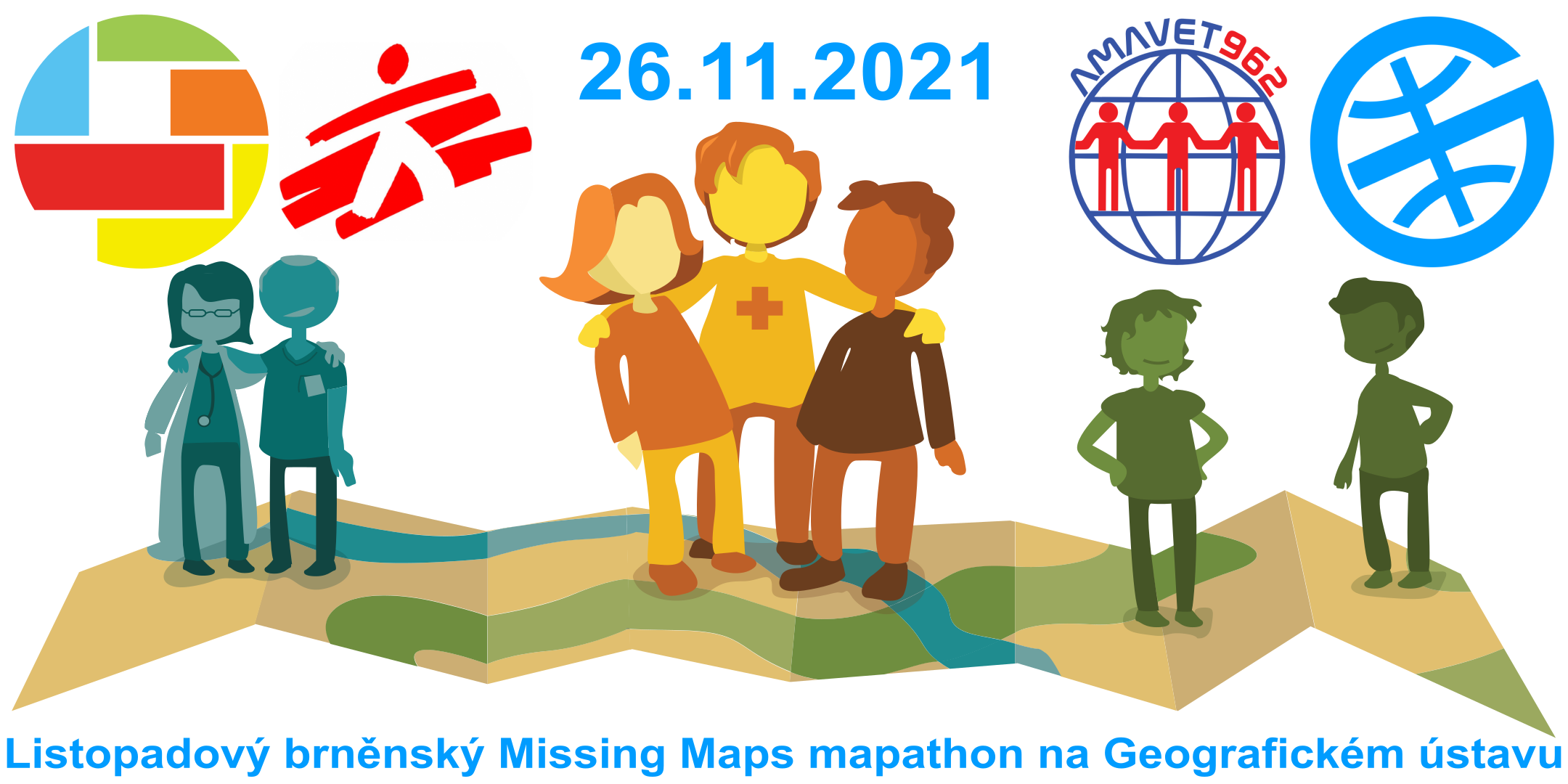
pátek 26. listopadu 2021 od 18:00 do 21:00
Geografický ústav, Přírodovědecká fakulta, Masarykova univerzita,
učebna Z1, budova 5
Kotlářská 267/2, 602 00 Brno
Přesné místo mapathonu: https://www.openstreetmap.org/way/50048465
Co se na mapathonu bude dít?
Na mapathonu budeme společně podle satelitních snímků vytvářet v OpenStreetMap mapu jednoho z míst, na kterém působí Lékaři bez hranic. Pokud nemáte zkušenosti, nevadí. Všechno se na místě naučíte a po krátkém školení už budete moci sami mapovat. Pokud máte zkušenosti, tím lépe. Budeme pracovat ve třech skupinách:
- Skupina začátečníků bude při školení získávat první zkušenosti s editací OpenStreetMap
- Zkušenější mapéři se budou mít možnost naučit program JOSM – volně dostupný pokročilý editor pro OpenStreetMap.
- Ti, kteří už umí alespoň základy JOSM, se mohou vyškolit na validátory, kteří kontrolují výsledky práce dalších mapérů. Vyškolení co největšího počtu validátorů je aktuálně ten nejdůležitější úkol mapathonů po celém světě. Jsou nedostatkoví a vážení, tak se přidejte.
Samozřejmě, zváni jsou i zkušení uživatelé, kteří už žádné školení nepotřebují a chtějí jen nerušeně mapovat. Pokud již patříte mezi zkušené a chtěli byste se přidat do organizačního týmu, tak se na tom na mapathonu rádi domluvíme.
Co potřebujete?
Není potřeba mít předchozí zkušenosti. Veškeré nástroje jsou zdarma a open source.
Začátečníci mohou přijít i bez vlastního notebooku. Budeme mít k dispozici počítačovou učebnu.
Pokud však chcete být v jedné z pokročilejších skupin, je potřeba si vzít vlastní notebook a myš. Bezdrátový internet bude zajištěn.
Mám si něco připravit?
Pokud ještě nemáte účet na OpenStreetMap, vytvořte si ho zde: https://www.openstreetmap.org/user/new.
Pokud chcete být ve skupině pokročilých mapérů učících se JOSM, je vhodné mít na počítači předem nainstalován program JOSM. Je volně ke stažení na adrese https://josm.openstreetmap.de. Program vyžaduje nainstalovaný programovací jazyk Java.
Pokud chcete být ve skupině validátorů, je výhodou již alespoň základní znalost editoru JOSM. Ideální je proto nejdříve absolvovat mapathon ve skupině JOSM a na následujícím mapathonu přejít k validátorům.
Těší se na Vás Geografický ústav Přírodovědecké fakulty Masarykovy univerzity a organizační tým brněnských mapathonů (Katka, Radim, Daniel, Miloslav). Spoluorganizátorem listopadového brněnského mapathonu je také Amavet 962.
Bližší informace: Radim Štampach (stampach@mail.muni.cz)
Listopadový brněnský Missing maps mapathon na Geografickém ústavu
26.11.2021 18:00 Geografický ústav MUPřijďte podpořit práci Lékařů bez hranic tím, že pomůžete do otevřené mapy světa OpenStreetMap zmapovat místa, která jsou ohrožena humanitárními krizemi.
Je to více než rok, co se v Brně konal klasický prezenční mapathon, kde se všichni sešli a mapovali na jednom místě. Během měsíců, kdy prezenční mapathony nebyly možné, je nahradily online mapathony, kterých se mohou zúčastnit i ti, kteří nemohou přicestovat na klasický mapathon. Mnohé mapathony tak budou dále umožňovat online účast i během prezenčních mapathonů. Listopadový brněnský mapathon bude jedním z nich.
Mapy, družicové snímky, exotické země, rozvojová pomoc - všechna tato témata spadají do Geografie. I proto bude náš brněnský listopadový mapathon pořádán v rámci Dnů geografie. O této mezinárodní akci se více dočtete na https://www.dnygeografie.cz/.

pátek 26. listopadu 2021 od 18:00 do 21:00
Geografický ústav, Přírodovědecká fakulta, Masarykova univerzita,
učebna Z1, budova 5
Kotlářská 267/2, 602 00 Brno
Přesné místo mapathonu: https://www.openstreetmap.org/way/50048465
Co se na mapathonu bude dít?
Na mapathonu budeme společně podle satelitních snímků vytvářet v OpenStreetMap mapu jednoho z míst, na kterém působí Lékaři bez hranic. Pokud nemáte zkušenosti, nevadí. Všechno se na místě naučíte a po krátkém školení už budete moci sami mapovat. Pokud máte zkušenosti, tím lépe. Budeme pracovat ve třech skupinách:
- Skupina začátečníků bude při školení získávat první zkušenosti s editací OpenStreetMap
- Zkušenější mapéři se budou mít možnost naučit program JOSM – volně dostupný pokročilý editor pro OpenStreetMap.
- Ti, kteří už umí alespoň základy JOSM, se mohou vyškolit na validátory, kteří kontrolují výsledky práce dalších mapérů. Vyškolení co největšího počtu validátorů je aktuálně ten nejdůležitější úkol mapathonů po celém světě. Jsou nedostatkoví a vážení, tak se přidejte.
Samozřejmě, zváni jsou i zkušení uživatelé, kteří už žádné školení nepotřebují a chtějí jen nerušeně mapovat. Pokud již patříte mezi zkušené a chtěli byste se přidat do organizačního týmu, tak se na tom na mapathonu rádi domluvíme.
Co potřebujete?
Není potřeba mít předchozí zkušenosti. Veškeré nástroje jsou zdarma a open source.
Začátečníci mohou přijít i bez vlastního notebooku. Budeme mít k dispozici počítačovou učebnu.
Pokud však chcete být v jedné z pokročilejších skupin, je potřeba si vzít vlastní notebook a myš. Bezdrátový internet bude zajištěn.
Mám si něco připravit?
Pokud ještě nemáte účet na OpenStreetMap, vytvořte si ho zde: https://www.openstreetmap.org/user/new.
Pokud chcete být ve skupině pokročilých mapérů učících se JOSM, je vhodné mít na počítači předem nainstalován program JOSM. Je volně ke stažení na adrese https://josm.openstreetmap.de. Program vyžaduje nainstalovaný programovací jazyk Java.
Pokud chcete být ve skupině validátorů, je výhodou již alespoň základní znalost editoru JOSM. Ideální je proto nejdříve absolvovat mapathon ve skupině JOSM a na následujícím mapathonu přejít k validátorům.
Těší se na Vás Geografický ústav Přírodovědecké fakulty Masarykovy univerzity a organizační tým brněnských mapathonů (Katka, Radim, Daniel, Miloslav). Spoluorganizátorem listopadového brněnského mapathonu je také Amavet 962.
Bližší informace: Radim Štampach (stampach@mail.muni.cz)
Listopadový brněnský Missing maps mapathon na Geografickém ústavu
26.11.2021 18:00 Geografický ústav MUPřijďte podpořit práci Lékařů bez hranic tím, že pomůžete do otevřené mapy světa OpenStreetMap zmapovat místa, která jsou ohrožena humanitárními krizemi.
Je to více než rok, co se v Brně konal klasický prezenční mapathon, kde se všichni sešli a mapovali na jednom místě. Během měsíců, kdy prezenční mapathony nebyly možné, je nahradily online mapathony, kterých se mohou zúčastnit i ti, kteří nemohou přicestovat na klasický mapathon. Mnohé mapathony tak budou dále umožňovat online účast i během prezenčních mapathonů. Listopadový brněnský mapathon bude jedním z nich.
Na základě doporučení krizového výboru Masarykovy univerzity bylo rozhodnuto, že se mapathon odehraje jen v online prostoru. Odkaz pro připojení a další informace bude přihlášeným účastníkům zaslán několik dní před začátkem mapathonu.
Mapy, družicové snímky, exotické země, rozvojová pomoc - všechna tato témata spadají do Geografie. I proto bude náš brněnský listopadový mapathon pořádán v rámci Dnů geografie. O této mezinárodní akci se více dočtete na https://www.dnygeografie.cz/.

pátek 26. listopadu 2021 od 18:00 do 21:00
online, odkaz pro připojení bude přihlášeným účastníkům zaslán několik dní předem
Co se na mapathonu bude dít?
Na mapathonu budeme společně podle satelitních snímků vytvářet v OpenStreetMap mapu jednoho z míst, na kterém působí Lékaři bez hranic. Pokud nemáte zkušenosti, nevadí. Všechno se na místě naučíte a po krátkém školení už budete moci sami mapovat. Pokud máte zkušenosti, tím lépe. Budeme pracovat ve třech skupinách:
- Skupina začátečníků bude při školení získávat první zkušenosti s editací OpenStreetMap
- Zkušenější mapéři se budou mít možnost naučit program JOSM – volně dostupný pokročilý editor pro OpenStreetMap.
- Ti, kteří už umí alespoň základy JOSM, se mohou vyškolit na validátory, kteří kontrolují výsledky práce dalších mapérů. Vyškolení co největšího počtu validátorů je aktuálně ten nejdůležitější úkol mapathonů po celém světě. Jsou nedostatkoví a vážení, tak se přidejte.
Samozřejmě, zváni jsou i zkušení uživatelé, kteří už žádné školení nepotřebují a chtějí jen nerušeně mapovat. Pokud již patříte mezi zkušené a chtěli byste se přidat do organizačního týmu, tak se na tom na mapathonu rádi domluvíme.
Co potřebujete?
Není potřeba mít předchozí zkušenosti. Veškeré nástroje jsou zdarma a open source.
Setkání se uskuteční online, je potřeba mít vlastní počítač/notebook, myš a připojení k internetu.
Mám si něco připravit?Pokud ještě nemáte účet na OpenStreetMap, vytvořte si ho zde: https://www.openstreetmap.org/user/new.
Pokud chcete být ve skupině pokročilých mapérů učících se JOSM, je vhodné mít na počítači předem nainstalován program JOSM. Je volně ke stažení na adrese https://josm.openstreetmap.de. Program vyžaduje nainstalovaný programovací jazyk Java.
Pokud chcete být ve skupině validátorů, je výhodou již alespoň základní znalost editoru JOSM. Ideální je proto nejdříve absolvovat mapathon ve skupině JOSM a na následujícím mapathonu přejít k validátorům.
Těší se na Vás Geografický ústav Přírodovědecké fakulty Masarykovy univerzity a organizační tým brněnských mapathonů (Katka, Radim, Daniel, Miloslav). Spoluorganizátorem listopadového brněnského mapathonu je také Amavet 962.
Bližší informace: Radim Štampach (stampach@mail.muni.cz)
Galileo: en route to full operational capability
26.11.2021 13:00 ESA Navigation Video:
00:05:36
Video:
00:05:36
Soon another pair of Galileo satellites will be launched on top of a Soyuz from Europe spaceport in French Guiana. These satellites are the first of the so-called 'Batch 3', comprising of 12 additional first-generation Galileo satellites commissioned in 2017 to bring the constellation to full operational capability. They will be used to further expand the constellation up to 38 satellites and act as backups and spares for satellites that reach their end-of-life.
This 11th Galileo launch also marks the 10 year anniversary of the first launch of the Galileo operational satellites and the start of the construction of the constellation. Ten years later Galileo is the most accurate satellite navigation system in the world and available on every recent smartphone and device. It is also two decades since satellite navigation was first introduced as a completely new activity in the European space sector.
Meanwhile ESA continues to ensure the future of the Galileo programme and European expertise in satellite navigation. For Galileo ESA has already commissioned a second generation of more powerful and flexible navigation satellites while new services are being developed to meet market demand.
Aktualizace dat a prohlížecí služby nové podoby SM 5
26.11.2021 11:05 ČÚZK - Geoportál Aktualizace dat a prohlížecí služby nové podoby SM 5Byla provedena pravidelná roční aktualizace nové podoby Státní mapy 1:5 000.
Aktualizovaná data poskytuje i prohlížecí služba.
Grafická přehledka pokrytí s informacemi o jednotlivých mapových listech viz: stav aktualizace
Aktualizace dat a prohlížecí služby nové podoby SM 5
26.11.2021 11:05 ČÚZK - Geoportál Aktualizace dat a prohlížecí služby nové podoby SM 5Byla provedena pravidelná roční aktualizace nové podoby Státní mapy 1:5 000.
Aktualizovaná data poskytuje i prohlížecí služba.
Grafická přehledka pokrytí s informacemi o jednotlivých mapových listech viz: stav aktualizace
Aktualizace dat a prohlížecí služby nové podoby SM 5
26.11.2021 11:05 ČÚZK - Geoportál Aktualizace dat a prohlížecí služby nové podoby SM 5Byla provedena pravidelná roční aktualizace nové podoby Státní mapy 1:5 000.
Aktualizovaná data poskytuje i prohlížecí služba.
Grafická přehledka pokrytí s informacemi o jednotlivých mapových listech viz: stav aktualizace
Aktualizace dat a prohlížecí služby nové podoby SM 5
26.11.2021 11:05 ČÚZK - Geoportál Aktualizace dat a prohlížecí služby nové podoby SM 5Byla provedena pravidelná roční aktualizace nové podoby Státní mapy 1:5 000.
Aktualizovaná data poskytuje i prohlížecí služba.
Grafická přehledka pokrytí s informacemi o jednotlivých mapových listech viz: stav aktualizace
Aktualizace dat a prohlížecí služby nové podoby SM 5
26.11.2021 11:05 ČÚZK - Geoportál Aktualizace dat a prohlížecí služby nové podoby SM 5Byla provedena pravidelná roční aktualizace nové podoby Státní mapy 1:5 000.
Aktualizovaná data poskytuje i prohlížecí služba.
Grafická přehledka pokrytí s informacemi o jednotlivých mapových listech viz: stav aktualizace
Aktualizace dat a prohlížecí služby nové podoby SM 5
26.11.2021 11:05 ČÚZK - Geoportál Aktualizace dat a prohlížecí služby nové podoby SM 5Byla provedena pravidelná roční aktualizace nové podoby Státní mapy 1:5 000.
Aktualizovaná data poskytuje i prohlížecí služba.
Grafická přehledka pokrytí s informacemi o jednotlivých mapových listech viz: stav aktualizace
Aktualizace dat a prohlížecí služby nové podoby SM 5
26.11.2021 11:05 ČÚZK - Geoportál Aktualizace dat a prohlížecí služby nové podoby SM 5Byla provedena pravidelná roční aktualizace nové podoby Státní mapy 1:5 000.
Aktualizovaná data poskytuje i prohlížecí služba.
Grafická přehledka pokrytí s informacemi o jednotlivých mapových listech viz: stav aktualizace
Aktualizace dat a prohlížecí služby nové podoby SM 5
26.11.2021 11:05 ČÚZK - Geoportál Aktualizace dat a prohlížecí služby nové podoby SM 5Byla provedena pravidelná roční aktualizace nové podoby Státní mapy 1:5 000.
Aktualizovaná data poskytuje i prohlížecí služba.
Grafická přehledka pokrytí s informacemi o jednotlivých mapových listech viz: stav aktualizace
Aktualizace dat a prohlížecí služby nové podoby SM 5
26.11.2021 11:05 ČÚZK - Geoportál Aktualizace dat a prohlížecí služby nové podoby SM 5Byla provedena pravidelná roční aktualizace nové podoby Státní mapy 1:5 000.
Aktualizovaná data poskytuje i prohlížecí služba.
Grafická přehledka pokrytí s informacemi o jednotlivých mapových listech viz: stav aktualizace
Aktualizace dat a prohlížecí služby nové podoby SM 5
26.11.2021 11:05 ČÚZK - Geoportál Aktualizace dat a prohlížecí služby nové podoby SM 5Byla provedena pravidelná roční aktualizace nové podoby Státní mapy 1:5 000.
Aktualizovaná data poskytuje i prohlížecí služba.
Grafická přehledka pokrytí s informacemi o jednotlivých mapových listech viz: stav aktualizace
Aktualizace dat a prohlížecí služby nové podoby SM 5
26.11.2021 11:05 ČÚZK - Geoportál Aktualizace dat a prohlížecí služby nové podoby SM 5Byla provedena pravidelná roční aktualizace nové podoby Státní mapy 1:5 000.
Aktualizovaná data poskytuje i prohlížecí služba.
Grafická přehledka pokrytí s informacemi o jednotlivých mapových listech viz: stav aktualizace
Aktualizace dat a prohlížecí služby nové podoby SM 5
26.11.2021 11:05 ČÚZK - Geoportál Aktualizace dat a prohlížecí služby nové podoby SM 5Byla provedena pravidelná roční aktualizace nové podoby Státní mapy 1:5 000.
Aktualizovaná data poskytuje i prohlížecí služba.
Grafická přehledka pokrytí s informacemi o jednotlivých mapových listech viz: stav aktualizace
Aktualizace dat a prohlížecí služby nové podoby SM 5
26.11.2021 11:05 ČÚZK - Geoportál Aktualizace dat a prohlížecí služby nové podoby SM 5Byla provedena pravidelná roční aktualizace nové podoby Státní mapy 1:5 000.
Aktualizovaná data poskytuje i prohlížecí služba.
Grafická přehledka pokrytí s informacemi o jednotlivých mapových listech viz: stav aktualizace
Aktualizace dat a prohlížecí služby nové podoby SM 5
26.11.2021 11:05 ČÚZK - Geoportál Aktualizace dat a prohlížecí služby nové podoby SM 5Byla provedena pravidelná roční aktualizace nové podoby Státní mapy 1:5 000.
Aktualizovaná data poskytuje i prohlížecí služba.
Grafická přehledka pokrytí s informacemi o jednotlivých mapových listech viz: stav aktualizace
Aktualizace dat a prohlížecí služby nové podoby SM 5
26.11.2021 11:05 ČÚZK - Geoportál Aktualizace dat a prohlížecí služby nové podoby SM 5Byla provedena pravidelná roční aktualizace nové podoby Státní mapy 1:5 000.
Aktualizovaná data poskytuje i prohlížecí služba.
Grafická přehledka pokrytí s informacemi o jednotlivých mapových listech viz: stav aktualizace
Aktualizace dat a prohlížecí služby nové podoby SM 5
26.11.2021 11:05 ČÚZK - Geoportál Aktualizace dat a prohlížecí služby nové podoby SM 5Byla provedena pravidelná roční aktualizace nové podoby Státní mapy 1:5 000.
Aktualizovaná data poskytuje i prohlížecí služba.
Grafická přehledka pokrytí s informacemi o jednotlivých mapových listech viz: stav aktualizace
Aktualizace dat a prohlížecí služby nové podoby SM 5
26.11.2021 11:05 ČÚZK - Geoportál Aktualizace dat a prohlížecí služby nové podoby SM 5Byla provedena pravidelná roční aktualizace nové podoby Státní mapy 1:5 000.
Aktualizovaná data poskytuje i prohlížecí služba.
Grafická přehledka pokrytí s informacemi o jednotlivých mapových listech viz: stav aktualizace
Aktualizace dat a prohlížecí služby nové podoby SM 5
26.11.2021 11:05 ČÚZK - Geoportál Aktualizace dat a prohlížecí služby nové podoby SM 5Byla provedena pravidelná roční aktualizace nové podoby Státní mapy 1:5 000.
Aktualizovaná data poskytuje i prohlížecí služba.
Grafická přehledka pokrytí s informacemi o jednotlivých mapových listech viz: stav aktualizace
Aktualizace dat a prohlížecí služby nové podoby SM 5
26.11.2021 11:05 ČÚZK - Geoportál Aktualizace dat a prohlížecí služby nové podoby SM 5Byla provedena pravidelná roční aktualizace nové podoby Státní mapy 1:5 000.
Aktualizovaná data poskytuje i prohlížecí služba.
Grafická přehledka pokrytí s informacemi o jednotlivých mapových listech viz: stav aktualizace
Earth from Space: Kainji Lake
26.11.2021 10:00 ESA Observing the Earth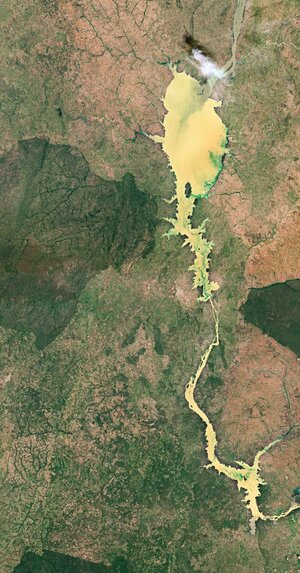
Kainji Lake, a reservoir on the Niger River in western Nigeria, is featured in this true-colour image captured by the Copernicus Sentinel-2 mission.
Schránka pro příjem podání
26.11.2021 8:35 ČÚZK /Urady/Katastralni-urady/Katastralni-urady/Katastralni-urad-pro-Kralovehradecky-kraj/Katastralni-pracoviste/KP-Nachod/O-uradu/Aktuality/Schranka-pro-prijem-podaniSchránka pro příjem podání
26.11.2021 8:35 ČÚZK - předpisy a opatření Katastrální úřad pro Královéhradecký kraj - Katastrální pracoviště Náchod zveřejnil novou aktualitu: Vážení klienti,s účinností od 26. 11. 2021 je na Katastrálním pracovišti Náchod instalována schránka pro příjem podání. Tato schránka je určena pro bezkontaktní podání návrhů na vklad a dalších písemností určených tomuto pracovišti. Schránka je pravidelně vybírána, okamžikem podání je okamžik výběru schránky. Příjem podání bude potvrzen spolu s případným podkladem pro platbu správního poplatku na Vámi sdělenou e-mailovou adresu.
Black Friday u Arkance Systems – sleva 20 % na produkty firmy Autodesk
26.11.2021 0:00 Arkance SystemsCelosvětová akce Cyber Week je tady! Pořiďte si CAD, CAM, BIM nebo multimédia software od Autodesku za zvýhodněné ceny
Zpráva Black Friday u Arkance Systems – sleva 20 % na produkty firmy Autodesk pochází z arkance-systems.cz.
Galileos attached to upper stage as launch draws near
25.11.2021 17:24 ESA Navigation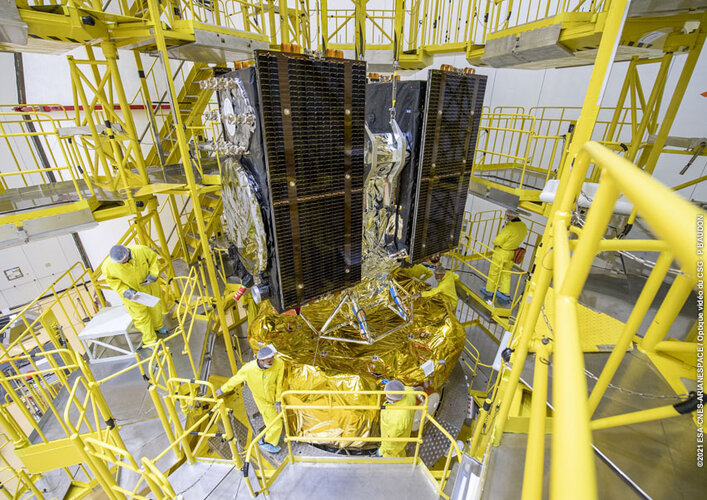 Image:
Galileos attached to upper stage as launch draws near
Image:
Galileos attached to upper stage as launch draws near
Galileo satellites in place for launch
25.11.2021 17:08 ESA Navigation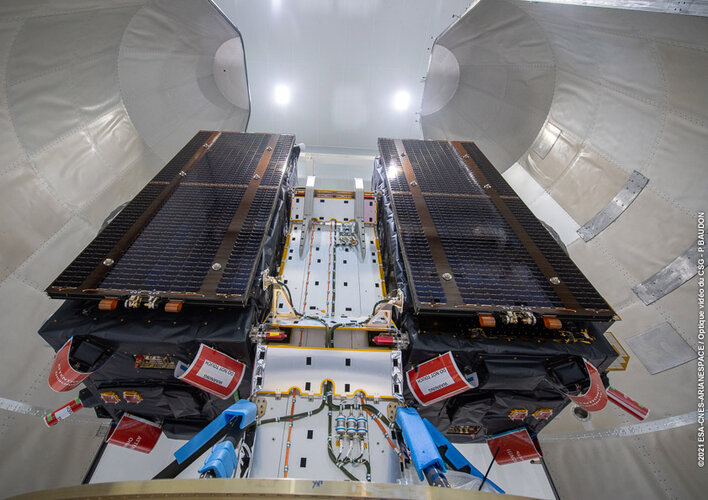
Europe’s next two Galileo satellites have been attached to the dispenser on which they will ride to orbit, and the launcher fairing that will protect them during the first part of the ascent to orbit has been closed around the pair.
neXat platform opens new global markets for MT
25.11.2021 15:58 GISCafe.com Webcasts-Webinars neXat’s new eMarketplace feature will help the teleport operator offer more services and reach new marketsBrussels, Belgium and Milan, Italy …
vedoucí oddělení aktualizace a dokumentace KN Katastrálního pracoviště Český Krumlov (ID SM 30000159
25.11.2021 14:21 ČÚZK - předpisy a opatření Katastrální úřad pro Jihočeský kraj Katastrální pracoviště Český Krumlovvypisuje výběrové řízení na místo
vedoucí oddělení aktualizace a dokumentace KN Katastrálního pracoviště Český Krumlov (ID SM 30000159/30003783)
vedoucí oddělení aktualizace a dokumentace KN Katastrálního pracoviště Český Krumlov (ID SM 30000159
25.11.2021 14:21 ČÚZK - volná místa Katastrální úřad pro Jihočeský kraj Katastrální pracoviště Český Krumlov vypisuje výběrové řízení na místo vedoucí oddělení aktualizace a dokumentace KN Katastrálního pracoviště Český Krumlov (ID SM 30000159vedoucí oddělení aktualizace a dokumentace KN Katastrálního pracoviště Český Krumlov (ID SM 30000159
25.11.2021 14:21 ČÚZK /Urady/Katastralni-urady/Katastralni-urady/Katastralni-urad-pro-Jihocesky-kraj/Uredni-deska/Oznameni-a-jina-uredni-sdeleni/Volna-mista/DMS/vedouci-oddeleni-aktualizace-a-dokumentace-KN-KataOdborný referent/vrchní referent v oddělení obnovy katastrálního operátu č.3 na Technické sekci
25.11.2021 12:48 ČÚZK - volná místa Katastrální úřad pro Jihomoravský kraj technická sekce vypisuje výběrové řízení na místo Odborný referent/vrchní referent v oddělení obnovy katastrálního operátu č.3 na Technické sekciOdborný referent/vrchní referent v oddělení obnovy katastrálního operátu č.3 na Technické sekci
25.11.2021 12:48 ČÚZK - předpisy a opatření Katastrální úřad pro Jihomoravský kraj technická sekcevypisuje výběrové řízení na místo
Odborný referent/vrchní referent v oddělení obnovy katastrálního operátu č.3 na Technické sekci
Odborný referent/vrchní referent v oddělení obnovy katastrálního operátu č.3 na Technické sekci
25.11.2021 12:48 ČÚZK /Urady/Katastralni-urady/Katastralni-urady/Katastralni-urad-pro-Jihomoravsky-kraj/Uredni-deska/Oznameni-a-jina-uredni-sdeleni/Volna-mista/DMS/Odborny-referent-vrchni-referent-v-oddeleni-obnovyAliance a CzechTrade pořádali konference k obchodním příležitostem v UAV průmyslu v Asii
25.11.2021 11:16 UAVATento týden v úterý 23.11. a v čtvrtek 25.11. jsme spolupořádali s CzechTrade dvě online konference o možnostech spolupráce v bezpilotním leteckém průmyslu v Asii. O úvodní slovo se postaral prezident Aliance pro bezpilotní letecký průmysl Jakub Karas. V úterý byla konference zaměřena na spolupráci v Singapuru a v Číně, včetně prezentací lokálních zástupců CzechTrade […]
The post Aliance a CzechTrade pořádali konference k obchodním příležitostem v UAV průmyslu v Asii appeared first on UAV Aliance pro bezpilotní letecký průmysl.
Orientované snímky v ArcGIS – Oriented Imagery
25.11.2021 11:03 blog ARCDATA Co to jsou orientované snímky? Jak takové snímky získat? K čemu nám slouží a jak je možné je využít v prostředí ArcGIS? To vše se dozvíte v tomto článku.odborný referent / vrchní referent v oddělení právních vztahů
25.11.2021 10:13 ČÚZK - předpisy a opatření Katastrální úřad pro Liberecký kraj - Katastrální pracoviště Semilyvypisuje výběrové řízení na místo
odborný referent / vrchní referent v oddělení právních vztahů
odborný referent / vrchní referent v oddělení právních vztahů
25.11.2021 10:13 ČÚZK /Urady/Katastralni-urady/Katastralni-urady/Katastralni-urad-pro-Liberecky-kraj/Uredni-deska/Oznameni-a-jina-uredni-sdeleni/Volna-mista/odborny-referent-vrchni-referent-v-oddeleni-praodborný referent / vrchní referent v oddělení právních vztahů
25.11.2021 10:13 ČÚZK - volná místa Katastrální úřad pro Liberecký kraj - Katastrální pracoviště Semily vypisuje výběrové řízení na místo odborný referent / vrchní referent v oddělení právních vztahůOzn_vyhl_-vyberoveho_rizeni_KP_PM
25.11.2021 9:42 ČÚZK /Urady/Katastralni-urady/Katastralni-urady/Katastralni-urad-pro-Plzensky-kraj/O-uradu/Aktuality/Ozn_vyhl_-vyberoveho_rizeni_KP_PMOzn_vyhl_-vyberoveho_rizeni_KP_PM
25.11.2021 9:42 ČÚZK - předpisy a opatření Český úřad zeměměřický a katastrální - Katastrální pracoviště Plzeň-město zveřejnil novou aktualitu: Oznámení o vyhlášení výběrového řízení na služební místo odborný/vrchní referent – poskytování informací KN PIKN1003,oddělení dokumentace KN, Katastrální úřad pro Plzeňský kraj, Katastrální pracoviště Plzeň - město
Ozn_vyhl_-vyberoveho_rizeni_KP_PM
25.11.2021 9:42 ČÚZK - předpisy a opatření Český úřad zeměměřický a katastrální - Katastrální pracoviště Plzeň-město zveřejnil novou aktualitu: Oznámení o vyhlášení výběrového řízení na služební místo odborný/vrchní referent – poskytování informací KN PIKN1003,oddělení dokumentace KN, Katastrální úřad pro Plzeňský kraj, Katastrální pracoviště Plzeň - město
Ozn_vyhl_-vyberoveho_rizeni_KP_PM
25.11.2021 9:42 ČÚZK - předpisy a opatření Český úřad zeměměřický a katastrální - Katastrální pracoviště Plzeň-město zveřejnil novou aktualitu: Oznámení o vyhlášení výběrového řízení na služební místo odborný/vrchní referent – poskytování informací KN PIKN1003,oddělení dokumentace KN, Katastrální úřad pro Plzeňský kraj, Katastrální pracoviště Plzeň - město
Oznámení o vyhlášení výběrového řízení na služební místo odborný/vrchní referent – poskytování info
25.11.2021 9:22 ČÚZK /Urady/Katastralni-urady/Katastralni-urady/Katastralni-urad-pro-Plzensky-kraj/Uredni-deska/Oznameni-a-jina-uredni-sdeleni/Volna-mista/DMS/Oznameni-o-vyhlaseni-vyberoveho-rizeni-na-sluzebniOznámení o vyhlášení výběrového řízení na služební místo odborný/vrchní referent – poskytování info
25.11.2021 9:22 ČÚZK - volná místa Katastrální úřad pro Plzeňský kraj Katastrální pracoviště Plzeň-město vypisuje výběrové řízení na místo Oznámení o vyhlášení výběrového řízení na služební místo odborný/vrchní referent – poskytování infoOznámení o vyhlášení výběrového řízení na služební místo odborný/vrchní referent – poskytování info
25.11.2021 9:22 ČÚZK - předpisy a opatření Katastrální úřad pro Plzeňský kraj Katastrální pracoviště Plzeň-městovypisuje výběrové řízení na místo
Oznámení o vyhlášení výběrového řízení na služební místo odborný/vrchní referent – poskytování informací KN PIKN1003
Autodesk to Present at Upcoming Investor Conferences
25.11.2021 9:00 GISCafe.com Webcasts-Webinars SAN FRANCISCO, Nov. 24, 2021 — (PRNewswire) — Autodesk, Inc. (NASDAQ: ADSK) today announced its executives will be speaking …Odstávka mapových aplikací Geoportálu a výdeje dat
25.11.2021 7:40 Jihočeský krajOd pátku 26.11.2021 od 16:00 budou z technických důvodů nedostupné mapové aplikace Geoportálu a nebude možné žádat o výdej dat. Obnovení plného provozu předpokládáme v sobotu 27.11.2021 ve večerních hodinách.
rnrnOmlouváme se za komplikace
Inpixon Recognized as an IDC Innovator for Location & Geospatial Intelligence
24.11.2021 18:01 GISCafe.com Webcasts-Webinars Overall Maturity of the Inpixon Platform Identified as Key DifferentiatorPALO ALTO, Calif., Nov. 24, 2021 — (PRNewswire) — Inpixon …
2021124_Odborný referent / vrchní referent oddělení dokumentace katastru nemovitostí
24.11.2021 14:58 ČÚZK - předpisy a opatření Katastrální úřad pro Středočeský kraj - Katastrální pracoviště Rakovník Vyhlášení výběrového řízení: Odborný referent / vrchní referent oddělení dokumentace katastru nemovitostí V části "Úřední deska", v sekci "Oznámení a jiná úřední sdělení" bylo vystaveno "Oznámení o vyhlášení výběrového řízení na obsazení služebního místa Odborný referent / vrchní referent oddělení dokumentace katastru nemovitostí"2021124_Odborný referent / vrchní referent oddělení dokumentace katastru nemovitostí
24.11.2021 14:58 ČÚZK /Urady/Katastralni-urady/Katastralni-urady/Katastralni-urad-pro-Stredocesky-kraj/Katastralni-pracoviste/KP-Rakovnik/O-uradu/Aktuality/20210922_Odborny-referent-oddeleni-aktualizace-(3)Odborný referent / vrchní referent oddělení dokumentace katastru nemovitostí
24.11.2021 14:56 ČÚZK - volná místa Katastrální úřad pro Středočeský kraj - Katastrální pracoviště Rakovník vypisuje výběrové řízení na místo Odborný referent / vrchní referent oddělení dokumentace katastru nemovitostíOdborný referent / vrchní referent oddělení dokumentace katastru nemovitostí
24.11.2021 14:56 ČÚZK /Urady/Katastralni-urady/Katastralni-urady/Katastralni-urad-pro-Stredocesky-kraj/Uredni-deska/Oznameni-a-jina-uredni-sdeleni/Volna-mista/Odborny-referent-vrchni-referent-oddeleni-dokumeOdborný referent / vrchní referent oddělení dokumentace katastru nemovitostí
24.11.2021 14:56 ČÚZK - předpisy a opatření Katastrální úřad pro Středočeský kraj - Katastrální pracoviště Rakovníkvypisuje výběrové řízení na místo Odborný referent / vrchní referent oddělení dokumentace katastru nemovitostí
Odborný referent / vrchní referent oddělení dokumentace katastru nemovitostí
MAWIS Geodata Management podpořila EU
24.11.2021 14:38 Hrdlička OP Podnikání a inovace pro konkurenceschopnost pomohl MAWIS Geodata Management.6. porada vedení firem HRDLIČKA Holdingu
24.11.2021 14:35 Hrdlička Villa Hrdlička v České Lípě se stala místem slavnostní události.20211124_Odborný referent oddělení právních vztahů k nemovitostem
24.11.2021 14:33 ČÚZK - předpisy a opatření Katastrální úřad pro Středočeský kraj - Katastrální pracoviště Mělník Vyhlášení výběrového řízení:Odborný referent oddělení právních vztahů k nemovitostem V části "Úřední deska", v sekci "Oznámení a jiná úřední sdělení" bylo vystaveno "Oznámení o vyhlášení výběrového řízení na obsazení systemizovaného místa Odborný referent oddělení právních vztahů k nemovitostem"20211124_Odborný referent oddělení právních vztahů k nemovitostem
24.11.2021 14:33 ČÚZK /Urady/Katastralni-urady/Katastralni-urady/Katastralni-urad-pro-Stredocesky-kraj/Katastralni-pracoviste/KP-Melnik/O-uradu/Aktuality/20210113_odborny-rada,-reditel-Katastralniho-p-(1)MAWIS Geodata Managemen podpořila EU
24.11.2021 13:00 Hrdlička OP Podnikání a inovace pro konkurenceschopnost pomohl MAWIS Geodata Managemen.Galileo prototype GIOVE-A switched off after 16 years in orbit
24.11.2021 13:00 ESA Navigation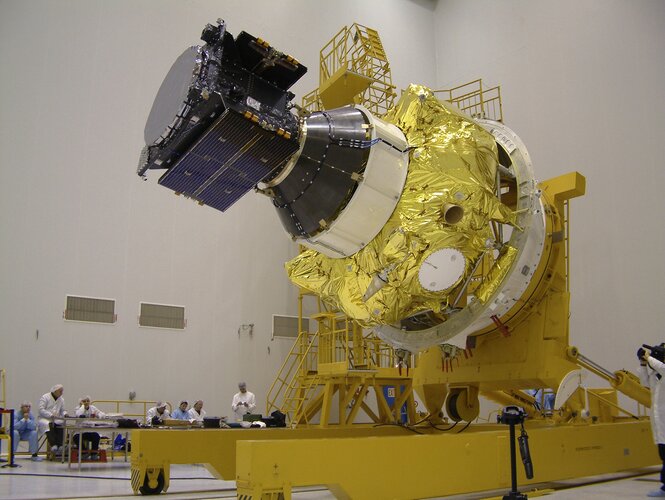
Europe’s first prototype satellite for Galileo, GIOVE-A, has today been formally decommissioned after 16 years of work in orbit. The 2005-launched mission secured Galileo’s radio frequencies for Europe, demonstrated key hardware and probed the then-unknown radiation environment of medium-Earth orbit.
Vánoční verze 15.52
24.11.2021 12:55 GEPROPřipravili jsme pro vás nové verze 15.52 našich produktů. Stahovat je můžete z obvyklého umístění na našem download serveru:
Výběr z hlavních novinek, které jsme pro vás nachystali, si můžete prohlédnout v následujících odkazech: Přehled změn:
… >>
Nový zákon o KGK
24.11.2021 12:35
ÚGKK SR
Dňa 24.11.2021 bol schválená nový zákon o Komore geodetov a kartografov.
Nová prohlížecí služba WMTS ZABAGED®
24.11.2021 11:05 ČÚZK - Geoportál Nová prohlížecí služba WMTS ZABAGED®Byla zveřejněna nová prohlížecí služba WMTS ZABAGED®, která poskytuje kartografickou vizualizaci dat ZABAGED® (včetně výškopisu ve formě vrstevnic) formou mapových dlaždic. Primárním účelem je poskytnout mapovým aplikacím základní topografický podklad pro tvorbu tematických map se stavem objektů odpovídající pravidelné čtvrtletní aktualizaci dat ZABAGED® a s důrazem na maximální rychlost překreslování podkladové mapy.
Nová prohlížecí služba WMTS ZABAGED®
24.11.2021 11:05 ČÚZK - Geoportál Nová prohlížecí služba WMTS ZABAGED®Byla zveřejněna nová prohlížecí služba WMTS ZABAGED®, která poskytuje kartografickou vizualizaci dat ZABAGED® (včetně výškopisu ve formě vrstevnic) formou mapových dlaždic. Primárním účelem je poskytnout mapovým aplikacím základní topografický podklad pro tvorbu tematických map se stavem objektů odpovídající pravidelné čtvrtletní aktualizaci dat ZABAGED® a s důrazem na maximální rychlost překreslování podkladové mapy.
Nová prohlížecí služba WMTS ZABAGED®
24.11.2021 11:05 ČÚZK - Geoportál Nová prohlížecí služba WMTS ZABAGED®Byla zveřejněna nová prohlížecí služba WMTS ZABAGED®, která poskytuje kartografickou vizualizaci dat ZABAGED® (včetně výškopisu ve formě vrstevnic) formou mapových dlaždic. Primárním účelem je poskytnout mapovým aplikacím základní topografický podklad pro tvorbu tematických map se stavem objektů odpovídající pravidelné čtvrtletní aktualizaci dat ZABAGED® a s důrazem na maximální rychlost překreslování podkladové mapy.
Nová prohlížecí služba WMTS ZABAGED®
24.11.2021 11:05 ČÚZK - Geoportál Nová prohlížecí služba WMTS ZABAGED®Byla zveřejněna nová prohlížecí služba WMTS ZABAGED®, která poskytuje kartografickou vizualizaci dat ZABAGED® (včetně výškopisu ve formě vrstevnic) formou mapových dlaždic. Primárním účelem je poskytnout mapovým aplikacím základní topografický podklad pro tvorbu tematických map se stavem objektů odpovídající pravidelné čtvrtletní aktualizaci dat ZABAGED® a s důrazem na maximální rychlost překreslování podkladové mapy.
Nová prohlížecí služba WMTS ZABAGED®
24.11.2021 11:05 ČÚZK - Geoportál Nová prohlížecí služba WMTS ZABAGED®Byla zveřejněna nová prohlížecí služba WMTS ZABAGED®, která poskytuje kartografickou vizualizaci dat ZABAGED® (včetně výškopisu ve formě vrstevnic) formou mapových dlaždic. Primárním účelem je poskytnout mapovým aplikacím základní topografický podklad pro tvorbu tematických map se stavem objektů odpovídající pravidelné čtvrtletní aktualizaci dat ZABAGED® a s důrazem na maximální rychlost překreslování podkladové mapy.
Nová prohlížecí služba WMTS ZABAGED®
24.11.2021 11:05 ČÚZK - Geoportál Nová prohlížecí služba WMTS ZABAGED®Byla zveřejněna nová prohlížecí služba WMTS ZABAGED®, která poskytuje kartografickou vizualizaci dat ZABAGED® (včetně výškopisu ve formě vrstevnic) formou mapových dlaždic. Primárním účelem je poskytnout mapovým aplikacím základní topografický podklad pro tvorbu tematických map se stavem objektů odpovídající pravidelné čtvrtletní aktualizaci dat ZABAGED® a s důrazem na maximální rychlost překreslování podkladové mapy.
Nová prohlížecí služba WMTS ZABAGED®
24.11.2021 11:05 ČÚZK - Geoportál Nová prohlížecí služba WMTS ZABAGED®Byla zveřejněna nová prohlížecí služba WMTS ZABAGED®, která poskytuje kartografickou vizualizaci dat ZABAGED® (včetně výškopisu ve formě vrstevnic) formou mapových dlaždic. Primárním účelem je poskytnout mapovým aplikacím základní topografický podklad pro tvorbu tematických map se stavem objektů odpovídající pravidelné čtvrtletní aktualizaci dat ZABAGED® a s důrazem na maximální rychlost překreslování podkladové mapy.
Nová prohlížecí služba WMTS ZABAGED®
24.11.2021 11:05 ČÚZK - Geoportál Nová prohlížecí služba WMTS ZABAGED®Byla zveřejněna nová prohlížecí služba WMTS ZABAGED®, která poskytuje kartografickou vizualizaci dat ZABAGED® (včetně výškopisu ve formě vrstevnic) formou mapových dlaždic. Primárním účelem je poskytnout mapovým aplikacím základní topografický podklad pro tvorbu tematických map se stavem objektů odpovídající pravidelné čtvrtletní aktualizaci dat ZABAGED® a s důrazem na maximální rychlost překreslování podkladové mapy.
Nová prohlížecí služba WMTS ZABAGED®
24.11.2021 11:05 ČÚZK - Geoportál Nová prohlížecí služba WMTS ZABAGED®Byla zveřejněna nová prohlížecí služba WMTS ZABAGED®, která poskytuje kartografickou vizualizaci dat ZABAGED® (včetně výškopisu ve formě vrstevnic) formou mapových dlaždic. Primárním účelem je poskytnout mapovým aplikacím základní topografický podklad pro tvorbu tematických map se stavem objektů odpovídající pravidelné čtvrtletní aktualizaci dat ZABAGED® a s důrazem na maximální rychlost překreslování podkladové mapy.
Nová prohlížecí služba WMTS ZABAGED®
24.11.2021 11:05 ČÚZK - Geoportál Nová prohlížecí služba WMTS ZABAGED®Byla zveřejněna nová prohlížecí služba WMTS ZABAGED®, která poskytuje kartografickou vizualizaci dat ZABAGED® (včetně výškopisu ve formě vrstevnic) formou mapových dlaždic. Primárním účelem je poskytnout mapovým aplikacím základní topografický podklad pro tvorbu tematických map se stavem objektů odpovídající pravidelné čtvrtletní aktualizaci dat ZABAGED® a s důrazem na maximální rychlost překreslování podkladové mapy.
Nová prohlížecí služba WMTS ZABAGED®
24.11.2021 11:05 ČÚZK - Geoportál Nová prohlížecí služba WMTS ZABAGED®Byla zveřejněna nová prohlížecí služba WMTS ZABAGED®, která poskytuje kartografickou vizualizaci dat ZABAGED® (včetně výškopisu ve formě vrstevnic) formou mapových dlaždic. Primárním účelem je poskytnout mapovým aplikacím základní topografický podklad pro tvorbu tematických map se stavem objektů odpovídající pravidelné čtvrtletní aktualizaci dat ZABAGED® a s důrazem na maximální rychlost překreslování podkladové mapy.
Nová prohlížecí služba WMTS ZABAGED®
24.11.2021 11:05 ČÚZK - Geoportál Nová prohlížecí služba WMTS ZABAGED®Byla zveřejněna nová prohlížecí služba WMTS ZABAGED®, která poskytuje kartografickou vizualizaci dat ZABAGED® (včetně výškopisu ve formě vrstevnic) formou mapových dlaždic. Primárním účelem je poskytnout mapovým aplikacím základní topografický podklad pro tvorbu tematických map se stavem objektů odpovídající pravidelné čtvrtletní aktualizaci dat ZABAGED® a s důrazem na maximální rychlost překreslování podkladové mapy.
Nová prohlížecí služba WMTS ZABAGED®
24.11.2021 11:05 ČÚZK - Geoportál Nová prohlížecí služba WMTS ZABAGED®Byla zveřejněna nová prohlížecí služba WMTS ZABAGED®, která poskytuje kartografickou vizualizaci dat ZABAGED® (včetně výškopisu ve formě vrstevnic) formou mapových dlaždic. Primárním účelem je poskytnout mapovým aplikacím základní topografický podklad pro tvorbu tematických map se stavem objektů odpovídající pravidelné čtvrtletní aktualizaci dat ZABAGED® a s důrazem na maximální rychlost překreslování podkladové mapy.
Nová prohlížecí služba WMTS ZABAGED®
24.11.2021 11:05 ČÚZK - Geoportál Nová prohlížecí služba WMTS ZABAGED®Byla zveřejněna nová prohlížecí služba WMTS ZABAGED®, která poskytuje kartografickou vizualizaci dat ZABAGED® (včetně výškopisu ve formě vrstevnic) formou mapových dlaždic. Primárním účelem je poskytnout mapovým aplikacím základní topografický podklad pro tvorbu tematických map se stavem objektů odpovídající pravidelné čtvrtletní aktualizaci dat ZABAGED® a s důrazem na maximální rychlost překreslování podkladové mapy.
Nová prohlížecí služba WMTS ZABAGED®
24.11.2021 11:05 ČÚZK - Geoportál Nová prohlížecí služba WMTS ZABAGED®Byla zveřejněna nová prohlížecí služba WMTS ZABAGED®, která poskytuje kartografickou vizualizaci dat ZABAGED® (včetně výškopisu ve formě vrstevnic) formou mapových dlaždic. Primárním účelem je poskytnout mapovým aplikacím základní topografický podklad pro tvorbu tematických map se stavem objektů odpovídající pravidelné čtvrtletní aktualizaci dat ZABAGED® a s důrazem na maximální rychlost překreslování podkladové mapy.
Nová prohlížecí služba WMTS ZABAGED®
24.11.2021 11:05 ČÚZK - Geoportál Nová prohlížecí služba WMTS ZABAGED®Byla zveřejněna nová prohlížecí služba WMTS ZABAGED®, která poskytuje kartografickou vizualizaci dat ZABAGED® (včetně výškopisu ve formě vrstevnic) formou mapových dlaždic. Primárním účelem je poskytnout mapovým aplikacím základní topografický podklad pro tvorbu tematických map se stavem objektů odpovídající pravidelné čtvrtletní aktualizaci dat ZABAGED® a s důrazem na maximální rychlost překreslování podkladové mapy.
Nová prohlížecí služba WMTS ZABAGED®
24.11.2021 11:05 ČÚZK - Geoportál Nová prohlížecí služba WMTS ZABAGED®Byla zveřejněna nová prohlížecí služba WMTS ZABAGED®, která poskytuje kartografickou vizualizaci dat ZABAGED® (včetně výškopisu ve formě vrstevnic) formou mapových dlaždic. Primárním účelem je poskytnout mapovým aplikacím základní topografický podklad pro tvorbu tematických map se stavem objektů odpovídající pravidelné čtvrtletní aktualizaci dat ZABAGED® a s důrazem na maximální rychlost překreslování podkladové mapy.
Nová prohlížecí služba WMTS ZABAGED®
24.11.2021 11:05 ČÚZK - Geoportál Nová prohlížecí služba WMTS ZABAGED®Byla zveřejněna nová prohlížecí služba WMTS ZABAGED®, která poskytuje kartografickou vizualizaci dat ZABAGED® (včetně výškopisu ve formě vrstevnic) formou mapových dlaždic. Primárním účelem je poskytnout mapovým aplikacím základní topografický podklad pro tvorbu tematických map se stavem objektů odpovídající pravidelné čtvrtletní aktualizaci dat ZABAGED® a s důrazem na maximální rychlost překreslování podkladové mapy.
Nová prohlížecí služba WMTS ZABAGED®
24.11.2021 11:05 ČÚZK - Geoportál Nová prohlížecí služba WMTS ZABAGED®Byla zveřejněna nová prohlížecí služba WMTS ZABAGED®, která poskytuje kartografickou vizualizaci dat ZABAGED® (včetně výškopisu ve formě vrstevnic) formou mapových dlaždic. Primárním účelem je poskytnout mapovým aplikacím základní topografický podklad pro tvorbu tematických map se stavem objektů odpovídající pravidelné čtvrtletní aktualizaci dat ZABAGED® a s důrazem na maximální rychlost překreslování podkladové mapy.
Odborný referent/vrchní referent – správce informačních a komunikačních technologií
24.11.2021 11:04 ČÚZK - volná místa Katastrální úřad pro Moravskoslezský kraj - technický odbor vypisuje výběrové řízení na místo Odborný referent/vrchní referent – správce informačních a komunikačních technologiíOdborný referent/vrchní referent – informačních a komunikačních technologií
24.11.2021 11:04 ČÚZK - volná místa Katastrální úřad pro Moravskoslezský kraj technický odbor vypisuje výběrové řízení na místo Odborný referent/vrchní referent – informačních a komunikačních technologiíOdborný referent/vrchní referent – správce informačních a komunikačních technologií
24.11.2021 11:04 ČÚZK - předpisy a opatření Katastrální úřad pro Moravskoslezský krajvypisuje výběrové řízení na místo
Odborný referent/vrchní referent – správce informačních a komunikačních technologií
Odborný referent/vrchní referent – správce informačních a komunikačních technologií
24.11.2021 11:04 ČÚZK /Urady/Katastralni-urady/Katastralni-urady/Katastralni-urad-pro-Moravskoslezsky-kraj/Uredni-deska/Oznameni-a-jina-uredni-sdeleni/Volna-mista/DMS/Odborny-referent-vrchni-referent-–-informacnich-aOdborný referent/vrchní referent – správce informačních a komunikačních technologií
24.11.2021 11:04 ČÚZK - předpisy a opatření Katastrální úřad pro Moravskoslezský kraj - technický odborvypisuje výběrové řízení na místo
Odborný referent/vrchní referent – správce informačních a komunikačních technologií
Odborný referent/vrchní referent – zápisy v řízení V a Z
24.11.2021 10:57 ČÚZK - předpisy a opatření Katastrální úřad pro Moravskoslezský kraj Katastrální pracoviště Karvinávypisuje výběrové řízení na místo
Odborný referent/vrchní referent – zápisy v řízení V a Z
Odborný referent/vrchní referent – zápisy v řízení V a Z
24.11.2021 10:57 ČÚZK - volná místa Katastrální úřad pro Moravskoslezský kraj Katastrální pracoviště Karviná vypisuje výběrové řízení na místo Odborný referent/vrchní referent – zápisy v řízení V a ZOdborný referent/vrchní referent – zápisy v řízení V a Z
24.11.2021 10:57 ČÚZK /Urady/Katastralni-urady/Katastralni-urady/Katastralni-urad-pro-Moravskoslezsky-kraj/Uredni-deska/Oznameni-a-jina-uredni-sdeleni/Volna-mista/DMS/Odborny-referent-vrchni-referent-–-zapisy-v-rizeniRada/odborný rada – řízení o opravě chyby v SPI
24.11.2021 10:50 ČÚZK - volná místa Katastrální úřad pro Moravskoslezský kraj Katastrální pracoviště Frýdek-Místek vypisuje výběrové řízení na místo Rada/odborný rada – řízení o opravě chyby v SPIRada/odborný rada – řízení o opravě chyby v SPI
24.11.2021 10:50 ČÚZK - předpisy a opatření Katastrální úřad pro Moravskoslezský kraj Katastrální pracoviště Frýdek-Místekvypisuje výběrové řízení na místo
Rada/odborný rada – řízení o opravě chyby v SPI



